Keeping Chickens: An American Tradition
Once upon a time, virtually all American households kept chickens. They were a basic necessity with their gifts of eggs for breakfast and baking. No family farm existed without fowl roaming about or roosters heralding the light of dawn. It was unthinkable.
Perhaps that is the reason that we have so many sayings having to do with chickens. “Don’t count your chickens until they hatch.” “Nest egg.” “Cooped up.” “Cocky.” “Pecking order.” “Egg money.” “Playing chicken.” The whole list is daunting.
After the Depression ended, Americans wanted to live in the cities. Food production became mechanized and the grocery list could be satisfied cheaply. Family farms were deserted in favor of civilized treats and material acquisitions. “Food” was inexpensive and easily available.
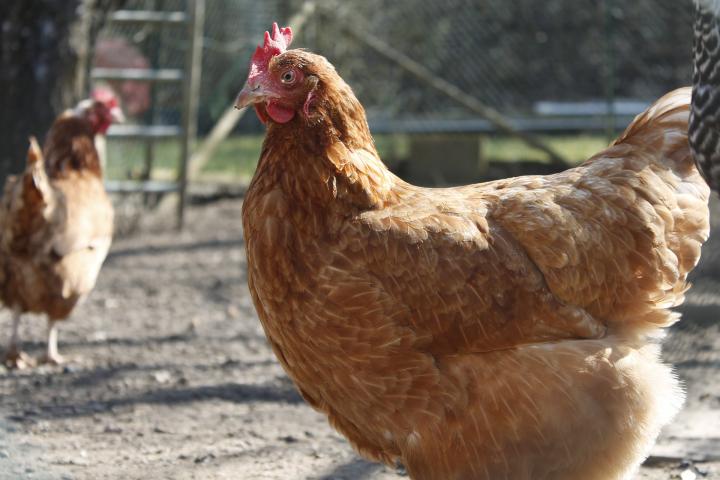
Recently, however, we are learning that being completely detached from our nourishment may not really be the best idea. Many holistic therapies are looking toward what we eat as key to our health. And what better way is there to know what we are ingesting than to produce it ourselves?
So chickens have returned to the local atmosphere.
Backyard Chicken Basics
Keeping chickens is not difficult. You need to have some land or space for them to scratch and roam, but their feeding and watering is not particularly time-consuming. It’s awfully nice to wander down to the coop mid-morning with some water and come back with a basket of fresh eggs. And, if they have access to quality food and lots of sunshine, their yolks stand up and salute you when you crack them.
Chicken Safety
The first thing to consider when getting chickens is their safety. Everybody likes a chicken dinner. Coyotes, foxes, minks, weasels, fisher cats, raccoons, mountain lions, bobcats, hawks, owls, and even dogs and some house cats eat chickens. A coop and run is only as safe as its weakest link. These must be built like a fort.
Building a Chicken Coop
Chickens have a harder time with heat than they do with cold, so ideally, the coop should be built in the shade. The coop itself should be sturdy and built without cracks between the boards. Building the coop on Sonotubes gives the chickens some shade in the summer and a place to go to get away from the snow in the winter. Windows are essential for ventilation but should also be completely covered with hardware cloth.
Here’s more information on how to build a chicken coop in your backyard.
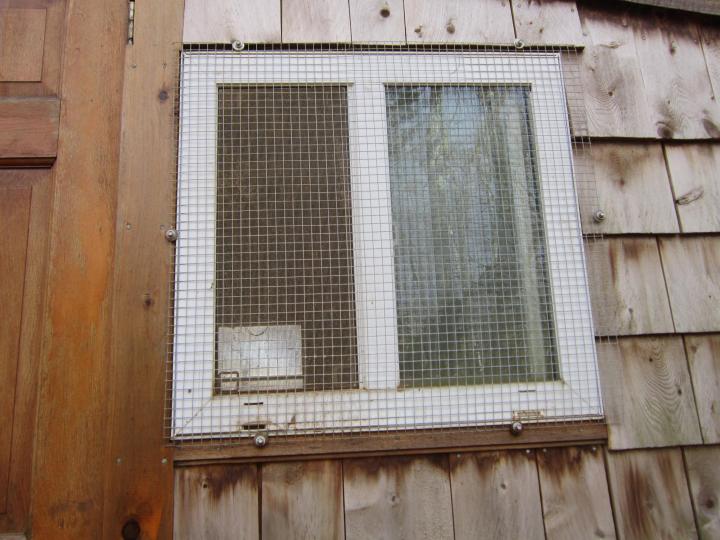
Building a Chicken Run
The run should be completely surrounded by a sturdy fence. Ideally, this fence will be at least ten feet tall so that the chickens can’t fly out. At the bottom, hardware cloth should be placed two or three inches up the fence and 18 inches outward covered by a bit of soil. This will thwart any of the many animals that like to dig under the fence to get to their snacks.
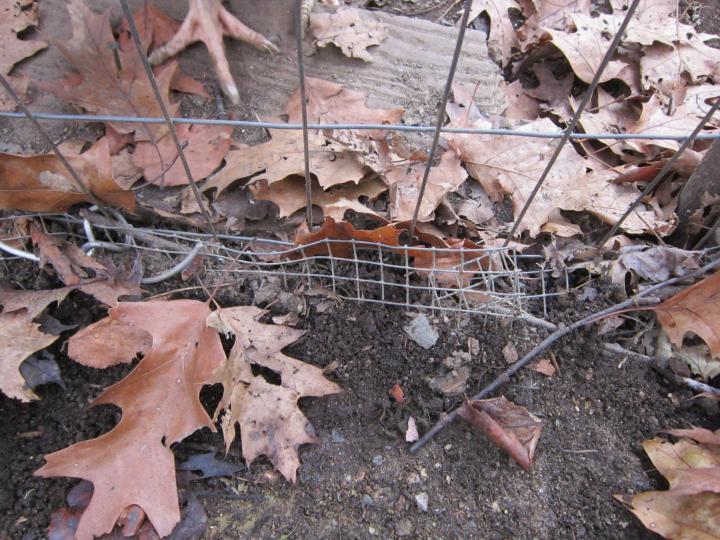
Poles should be place in the middle of the run to support a piece of clothesline. Surveyors’ tape can then be strung from side to side to discourage flying raptors.
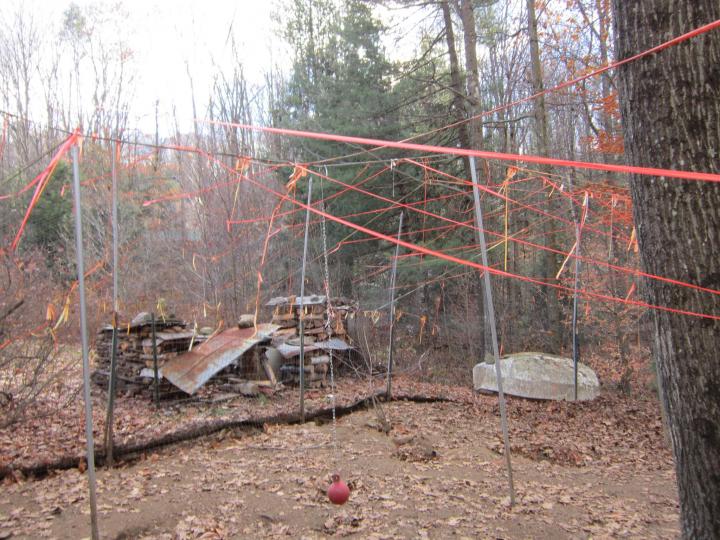
The human door into the coop should have more than one closure. Clever raccoons can sometimes figure out how to turn a door handle so some other lock is necessary.
Inside the Hen House
To keep your chickens comfortable, there will need to be nesting boxes for the laying of eggs—one for every three or four chickens.
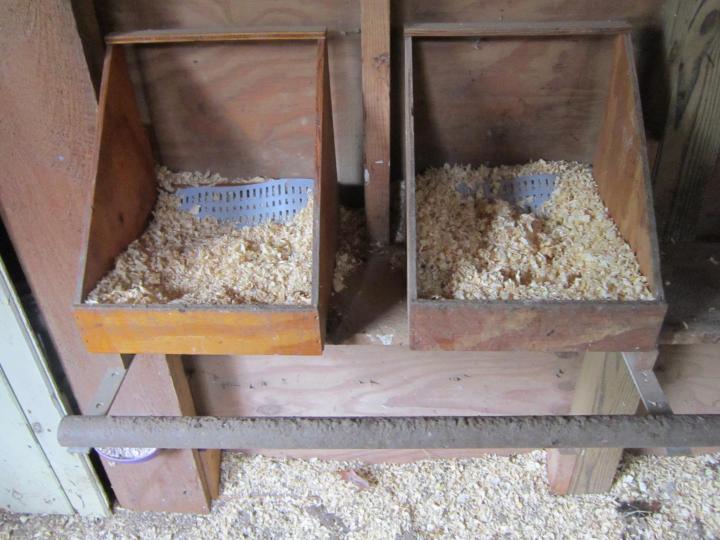
And, they will need roosts or posts to sleep on. Chickens’ feet are in the “hold” position when asleep so a thick sapling could be used here.
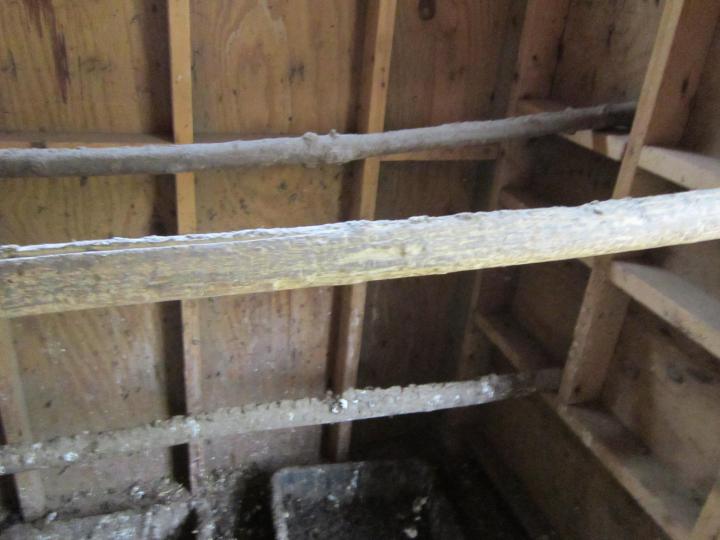
We place trays under the roosts to catch their poop before it gets too blended into the wood shavings. The preponderance of carbon in the shavings makes decomposition almost impossible.
We’ve had chickens for over ten years now and by following the above tips, we haven’t lost a single bird to a predator. I call their coop “Fort McChicken.”
For more advice on raising chickens, such as how to choose the right chicken breeds or raise baby chicks, see our Raising Chickens 101 series.
Comments